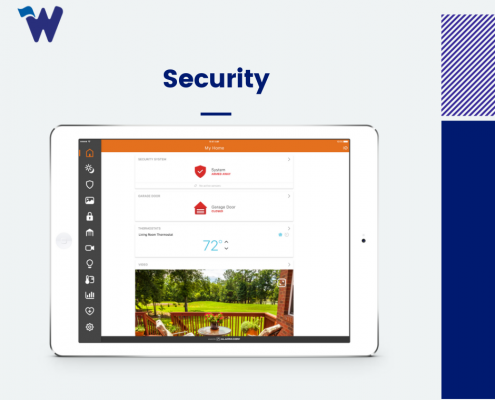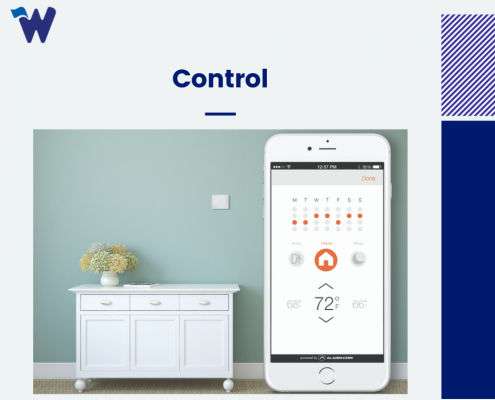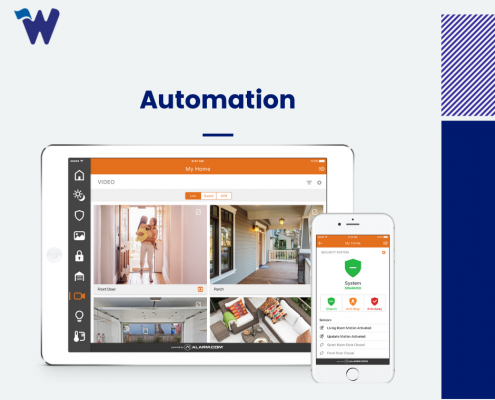Home Automation Basics
Have you heard about home automation and wondering what the deal with it is? Below we’re looking at a few aspects of home automation.
Home automation, as the term suggests, is basically equipping your home with smart devices that allow you to control certain features in your home. This is known as a smart house or smart home, allowing control over lights, thermostats, appliances, doors, cameras, and more.
It is important to note that all these smart devices usually connect through a communications channel (WiFi, Z-Wave, etc.) to a main hub in your home. With this, you can make adjustments or set conditions via an app like Alarm.com.
There are three main components of home automation:
- Automation (yes, literally)
- Control
- Security
Automation

This means using an app to automate conditions that you can set and make things simple
- Turn on the lights at a particular time
- Turn off the lights when the home is empty
- Schedule the heating to turn on if the temperatures fall below a certain degree
- Garage door openers can also be built into your automation system as well and controlled via the app.
The ability to do this comes with the smart devices that are available like a smart bulb or smart outlets, or if existing appliances like a heat pump or furnace can incorporate smart thermostats.
Automation helps with those mundane tasks or at least provides convenience. Since you can remotely perform tasks, the end-user experience is a great benefit where you can manage all of your home devices from one place. The only thing you would need to do is learn how to use the app which will connect you to all your devices throughout your home. This makes it easier to access the functionality you want in your home.
Home automation can be as simple as you want it.
Control

Control and automation are quite similar with the only difference being that you are in control of the device’s actions whenever you see fit. If you have a smart lock on your door and if a known person is at the door, you can let them in by unlocking the door through the app. Yes, with the right devices set up you can control your entire home from just an app.
Security

Home security is an added benefit when you invest in home automation equipment. Many consumers purchase devices like motion sensors, cameras, environmental sensors and others to make their homes safer and to add more security. You can set up your own parameters to turn on lights if someone is lurking around the house to make it seem like someone is there. Video doorbells have added voice features so you can talk to people and discourage those package thieves from stealing.
For more information about home automation or home security feel free to give us a call on 1-866-453-3388 or have a look at our solutions.
Sources:
https://stevessmarthomeguide.com/guide-home-automation/
https://www.safewise.com/blog/home-automation-guide-for-beginners/



